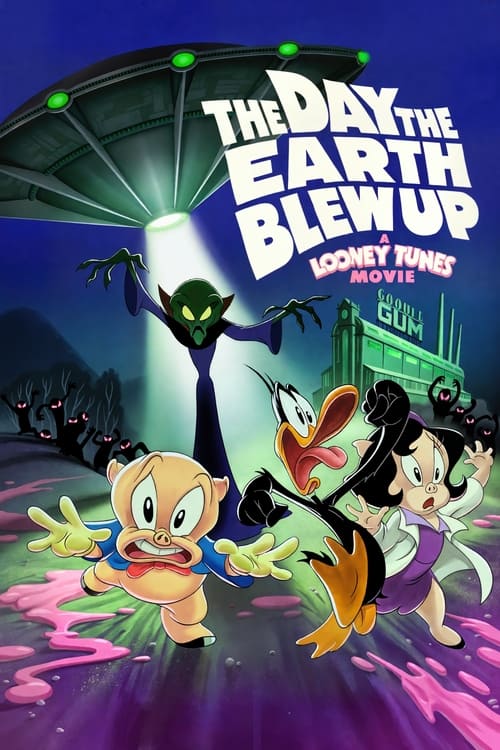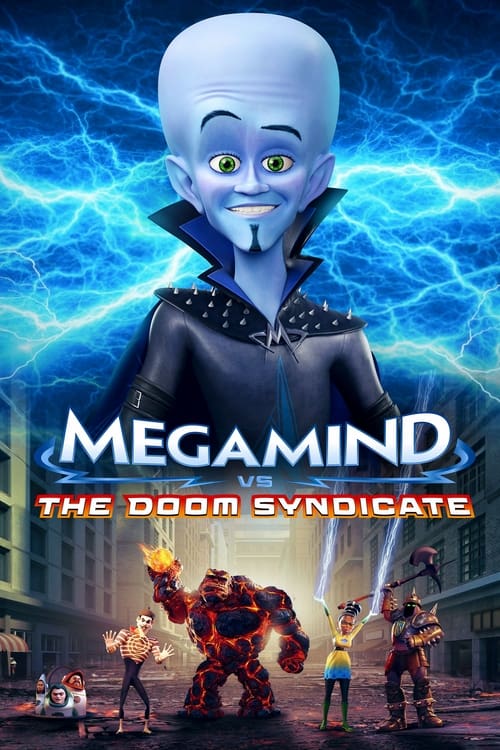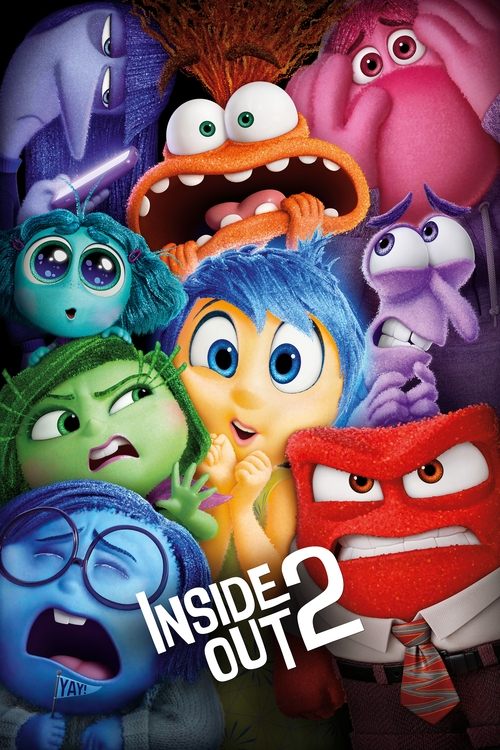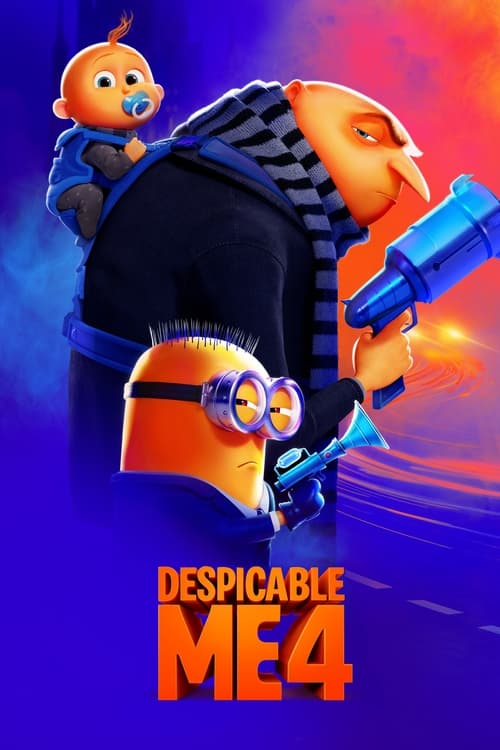
Ask Your Own Question
What is the plot?
Two days after the events that reshape Metro City, Megamind patrols the skyline in the new guise of the city's protector. He moves through the streets with Ol' Chum at his side, the former Minion now rechristened and attending Megamind's missions more as partner than as cog in a villainous machine. Their first action in this period sees them intercepting the Go-Fish gang as the crooks attempt to steal a priceless aquatic artifact from an underwater vault. Megamind coordinates a plan on the fly while Chum handles a mechanical snag in the retrieval drones; together they thwart the theft and return the treasure to the city. Civic leaders honor Megamind for the rescue: he receives the key to Metro City in a public ceremony that cements his reputation as the town's new guardian.
The public accolade has an unforeseen cost for his relationship with Chum. In the days that follow, Chum grows increasingly uneasy and resentful; he perceives that Megamind's celebrity draws attention away from all the support and labor he provides. He tells Megamind plainly that he expects to be treated as a sidekick, to stand beside him in every mission and receive the recognition he believes he deserves. Megamind hesitates and then refuses the formal title of sidekick, explaining that he intends to do this work differently now. Chum accepts this refusal with a wounded dignity, announcing that he will seek other opportunities to define himself. Megamind, believing he can't force Chum into a role he does not want, allows him to leave.
Chum takes that leave of absence literally. He finds work at a run-down diner on the city's east side and sets about refurbishing it with a stubborn pride. He rebuilds the stools and repaints the sign, transforms the menu with quirky names, and pours his mechanical creativity into a new espresso machine he rigs from salvaged parts. The diner becomes his project and his refuge; he greets regulars with skill and cheer, but he keeps an eye on newsfeeds of Megamind's patrols, nursing a quiet hope that he may someday return to the caped duo's rhythm.
Beyond the surface of civic life, old conspirators stir. The Doom Syndicate -- the supervillain ensemble Megamind once worked alongside and ultimately left -- orchestrates a prison break. Lady Doppler, Pierre Pressure, Behemoth, and Lord Nighty-Knight slip their restraints and reassemble. They travel to confront Megamind under the firm conviction that his ostensible change of heart is a ruse. They believe he feigns heroism as a cover for deeper plans and they want him back in their fold. To coerce proof of allegiance, they initiate a crime spree meant to goad Megamind into demonstrating his continued embrace of villainy. The Syndicate's crimes escalate until they deliver a direct challenge: if Megamind has truly turned, he must prove he remains capable of malfeasance by robbing a bank.
Megamind faces a dilemma. He cannot genuinely steal from the city he has sworn to protect, but he sees the danger in letting the Syndicate think his conversion is complete and thus lose their incentive to wreak havoc. To satisfy the Doom Syndicate's provocation without harming innocents, Megamind stages a false bank robbery. He enlists Keiko Morita, a young woman who has declared herself his biggest fan and who has been shadowing him with an eager, technical fascination. Keiko helps him choreograph a convincing deception: alarms blare on cue, masked figures rush through doors, and Megamind appears to slip back into familiar patterns of villainy. The Doom Syndicate watches and, temporarily reassured, withdraws, but the ruse also deepens Megamind's own internal uncertainty. He walks the city at night thinking about the precedent he sets when he pretends to do harm for the sake of appearance.
Unknown to Megamind, the Doom Syndicate discovers traces of a dormant plan he once entertained long before his reformation. Beneath Metro City's foundations, Megamind had covertly concealed rocket engines and launch mechanisms intended to fling the metropolis onto a lunar trajectory. He had intended those devices as an extreme demonstration of power in a past life of grandiosity, but he had abandoned the project. The Syndicate uncovers the hidden machinery and interprets its existence as further evidence that Megamind's conversion might be a charade. They prepare the underground launch infrastructure and threaten to use it themselves: either they will send the whole city rocketing toward the Moon, or they will detonate the systems and destroy Metro City in a cataclysmic finale. They set out to initiate the launch sequence and force Megamind to reveal whether he is protector or perpetrator.
Megamind becomes aware that the Syndicate intends to use the buried rockets. He undertakes a calculated deception to keep them from acting immediately. He feeds them false leads, stages illusions of villainous designs, and delays their progress by sowing confusion in their ranks. While he stalls, he recognizes another truth: he cannot meet the Syndicate alone. He needs Ol' Chum. He goes looking for him at the diner, where he sees the cheerful, competent proprietor Chum has become. Standing in the glow of the neon sign and amid the clatter of plates, Chum explains to Megamind that he feels more comfortable running his shop than returning to a life built around dangerous capes and gaudy schemes. Megamind, listening to the steadiness in Chum's voice, grasps how he has wounded his friend with earlier rejection. He offers Chum the sidekick role he earlier denied, telling Chum that he truly considers him his partner, but Chum, initially, resists, wanting to be sure that their friendship is not merely an appendix to Megamind's ego.
While Megamind lingers in the diner, the Doom Syndicate penetrates deeper into the plan and, following a chain of clues, figures out that Megamind's recent villainous displays were staged. They confront him and overwhelm him numerically and technologically. Pierre Pressure outmaneuvers Megamind's gadgets with a surge of compressed-air cannons; Behemoth uses brute force to tear apart surveillance arrays; Lord Nighty-Knight's martial skill keeps Megamind on the defensive; Lady Doppler, the Syndicate's strategic lead, corners him. The Syndicate strips away the illusion of the staged bank job and accuses Megamind of treachery. Megamind finds himself outmatched and beaten back into a narrow alley. He ducks into shadow to plan his next move, wounded in confidence if not in body.
As Megamind crouches in the alley and contemplates the scale of his failure, he is not alone. Roxanne -- the reporter who has been a persistent presence in his life -- finds him there, along with Keiko, who has followed him since the staged robbery. Roxanne speaks bluntly and with practical assurance; she reminds him that asking for aid is not a failing. Keiko, who admires every facet of Megamind's mind, offers detailed technical suggestions for countermeasures. Their intervention crystallizes something in Megamind: he has been resisting the resources of friendship and community he already possesses. At that instant, Chum returns to Megamind's side. Seeing his friend in danger makes Chum decide that the diner cannot hold him while the city risks annihilation. He abandons his renovations and grabs the tools he keeps in the shop, rejoining his old partner not out of obligation but because he recognizes the value of what they have done together.
Together, Megamind, Chum, Roxanne, and Keiko form a response team. They quickly assess the Syndicate's progress toward the launch control center: locks to the subterranean control room stand vulnerable, and the Syndicate's access protocols are already cracking the city's fail-safes. Megamind leads the small group to Everything City, a sprawling emporium of devices, to gather supplies: heavy-duty tethers, electromagnetic dampers, spare power cells, and industrial adhesives. Keiko rigs improvised jammers while Chum tapes together mechanical overrides from salvage parts. Roxanne drives the vehicle that moves them toward the underground access shaft. Each member executes a clear role: Megamind coordinates, Chum manages the hardware, Keiko handles the electronics, and Roxanne provides logistics and moral clarity.
As they approach the control facility beneath Metro City, the Doom Syndicate works feverishly to pry open the reinforced door to the launch room. They use hydraulic cutters and blast charges, with Lady Doppler overseeing the procedure and yelling orders. During the breach, Megamind and Roxanne attempt a frontal confrontation to delay them. Megamind engages the Syndicate head-on: he deploys diversionary holograms and gravity-defying tricks designed to redirect the villains' focus, while Roxanne uses a tethered device to jam power conduits. The Syndicate pushes back; Lord Nighty-Knight parries both Megamind's technological maneuvers and Roxanne's physical interventions. Despite their best efforts, Lady Doppler reaches the control console first: she slams a gloved hand onto the launch button and begins the initiation sequence.
Megamind and Roxanne realize the worst is happening. The hidden rockets under the city fire and Metro City starts to lift off the ground. Streets that moments before bore the tramlines now tilt under the strain of ascent; traffic becomes dislodged and buildings groan as the rack of engines thrust upward. People in the metropolis look up at a sky they do not expect to see: Metro City climbs away from the Earth's surface. As the launch progresses, Chum races to the secondary circuit access, a maintenance shaft that runs beneath the propulsion array. He reaches the override and uses a jury-rigged interface Keiko prepared to cut into the Syndicate's sequence. Chum initiates an emergency termination that halts the rockets' forward thrust, but the operation produces an immediate side effect: the engines shut down while the city is already in ascent, leaving Metro City in a precarious free-fall trajectory back toward the planet. The metropolis is no longer on a direct path to the Moon, but it is now descending toward Earth at a perilous rate, endangering millions.
Faced with a falling city, Megamind formulates a targeted plan. He lures the Doom Syndicate away from the now-damaged control room and toward a construction site at the city's edge -- a sprawling scaffold of cranes, steel girders, and unfinished towers. He knows that the location's industrial equipment can be used to apply counter-forces and to sever failing structures in a controlled fashion. He engages the Syndicate in combat there, deliberately drawing them into a fight that will allow Roxanne, Keiko, and Chum to manipulate the city's momentum from remote nodes.
In the construction site's chaotic verticality, each Syndicate member meets a different fate at the hands of the team. Megamind and Roxanne work in tandem to neutralize Lord Nighty-Knight: Megamind destabilizes the knight's footing with a precisely aimed repulsor burst while Roxanne employs a grappling hook to pin Nighty-Knight to a crane's lattice, immobilizing him. Behemoth proves resistant to brute force; Chum targets Behemoth's heavy gear with electromagnetic clamps and adhesive nets from Everything City, restricting his movement until Megamind corners him and applies a containment field that locks him into a storage module. Pierre Pressure attempts to use compressed-air weaponry to blow the team off the girders; Keiko rewires nearby pneumatic valves to reverse his blowguns, sending his own pressure blasts back at him and rendering his weapons inoperable. Lady Doppler, the Syndicate's strategist, attempts to regain control of the city's descent with a portable override, but Roxanne intercepts her while Megamind disrupts her balance using a magnetic pulse from his modified halo. The team seizes Lady Doppler and secures her with Chum's reinforced tethers.
Their maneuvers succeed without fatalities: each member of the Doom Syndicate is incapacitated, bound, or contained. With the villains detained, the team uses the construction site's cranes and anchored cables to apply stabilizing forces to the falling metropolis. Keiko directs a makeshift synchronization between the cranes' winches and the remaining safe thrusters in the city's propulsion array; Chum and Megamind attach high-tensile lines to strategic anchor points on buildings to distribute aerodynamic loads and prevent catastrophic structural shearing. Working with coordination that mirrors the best of their earlier villainous teamwork but now dedicated to saving lives, they lever the city's motion and bring Metro City's descent under controlled parameters. The metropolis glides through the atmosphere and touches down with significant but non-lethal damage; the systems they have rigged absorb impacts and prevent widespread collapse.
Once Metro City rests on the ground, emergency crews pour in under Roxanne's direction. The Doom Syndicate is taken into custody by law enforcement and returned to incarceration. City officials convene to decide leadership and recovery priorities. The civic body elects Roxanne to the office of Mayor; she accepts, stepping into an administrative role that will oversee reconstruction and oversee ethical governance. Keiko, her technical skills and bravery now public, is welcomed into Megamind's informal team as a valued advisor and mission specialist. In a brief ceremony that feels like a mirror to the earlier key-to-the-city moment, Keiko activates a newly designed hero signal -- a broadcast beacon that will alert citizens and allies to calls for aid -- and Megamind watches it cut a beam into the night sky. Megamind acknowledges in private to Chum that he was wrong to push him away, and he affirms that Chum is truly his sidekick; Chum accepts the title now on his own terms.
No main characters die during these events. The Doom Syndicate members survive their capture and are confined again in prison; the city's citizens suffer property damage but not mass fatalities because of the team's interventions. Metro City's streets and skyline sustain scars from the launch and descent, but the city remains habitable, and reconstruction begins immediately under Roxanne's administration.
In the film's mid-credits scene, camera movement shows the Doom Syndicate back behind thick cell bars in a high-security facility. The members sit in their cells, brooding over the failure of their plan. The door to the visitation area opens and a familiar figure steps in: Machiavillain, Megamind's old mentor and a figure of theatrical menace. Machiavillain crosses the floor and stands before the Syndicate's cells, looking at each of them with a measured expression that implies further intrigue. He speaks to them quietly, setting in motion a new line of communication between imprisoned malefactors. The scene closes on the Syndicate's faces as they listen to Machiavillain's words, leaving the status of future alliances open while Metro City begins the long work of repair and the new team of Megamind, Ol' Chum, Roxanne, and Keiko prepares for whatever challenges may come next.
What is the ending?
Short, Simple Narrative of the Ending
As Metro City hurtles toward disaster, launched into space by the Doom Syndicate, Megamind and his friends scramble to stop the countdown. Amidst chaos and bickering among the villains, Megamind uses clever tricks and teamwork to outwit his former allies. In the end, the launch is aborted, the city is saved, and Megamind solidifies his role as a true hero, proving that looking out for others--not just himself--is what makes a real difference.
Expanded, Chronological, Scene-by-Scene Narration of the Ending
The final act of Megamind vs. the Doom Syndicate begins with Metro City in panic. The Doom Syndicate--Lady Doppler, Pierre Pressure, Behemoth, and Lord Nighty-Knight--have successfully initiated a countdown to launch the entire city into space using rockets hidden beneath the streets. Citizens scream as buildings tremble, and the sky fills with the roar of engines. The city's fate hangs on a rapidly dwindling timer.
Inside the control room, Ol' Chum, Megamind's loyal companion, desperately tries to reach the "Cancel Launch" button. His face is tense, sweat beading on his brow as he dodges debris and malfunctioning machinery. Just as his fingers stretch toward the console, the Go Fish Gang--a group of minor henchmen--bursts in, blocking his path. Ol' Chum, though overwhelmed, fights them off with a series of quick, precise moves, his determination overriding his fear. He dispatches the gang, but the delay has cost precious seconds.
Meanwhile, the Doom Syndicate members, having breached the secured door to the control room, immediately fall into disarray. Lady Doppler, her hair crackling with static electricity, insists she should lead, while Lord Nighty-Knight, cloaked in shadows, argues for his own supremacy. Pierre Pressure, ever the manipulator, tries to hypnotize the others into following him, and Behemoth, a hulking mass of molten rock, simply smashes anything in his path. Their infighting creates chaos, each villain more concerned with claiming leadership than stopping the city's destruction.
Megamind, watching from a hidden vantage point, sees an opportunity. He steps into the fray, his blue skin glistening under the emergency lights. He taunts the Syndicate, playing on their egos and rivalries. "Maybe so, I guess you always were meant to be the leader, Lady Doppler," he quips, his voice dripping with sarcasm. The villains, distracted, turn on each other, their unity shattered by Megamind's words.
As the countdown reaches its final minutes, Megamind's allies--Roxanne, Keiko, and Ol' Chum--regroup. Roxanne's face is set with determination, her eyes scanning the room for a solution. Keiko, agile and quick, slips through the vents, bypassing security to reach a secondary control panel. Ol' Chum, though bruised and exhausted, refuses to give up, his loyalty to Megamind unwavering.
Megamind, realizing that brute force won't save the city, devises a plan. He activates a series of traps and gadgets, each designed to exploit the Syndicate's weaknesses. Lady Doppler is lured into a chamber where her weather powers backfire, dousing her in her own rain. Pierre Pressure falls victim to his own hypnotic device, entranced by a spinning disco ball. Behemoth, tricked by the oldest trick in the book--"Hey, look over there!"--charges through a wall and is momentarily trapped. Lord Nighty-Knight, confident in his mastery of fear, is startled by a sudden burst of light, his shadows dispelled.
With the Syndicate neutralized, Megamind and Ol' Chum rush to the main console. The timer blinks red, seconds remaining. Ol' Chum's hands shake as he reaches for the button, but Megamind places a reassuring hand on his shoulder. Together, they press "Cancel Launch." The engines sputter and die. The city, which had begun to lift from the ground, settles back with a shuddering thud. The citizens, who had been screaming in terror, now cheer in relief.
In the aftermath, the Doom Syndicate is rounded up by Metro City's authorities. Lady Doppler, her hair now frizzed and damp, glares at Megamind but says nothing. Pierre Pressure, still dazed, is led away in handcuffs. Behemoth, cooling into a pile of rubble, is loaded onto a truck. Lord Nighty-Knight, his cloak torn, slinks into the shadows, vowing revenge but powerless for now.
Megamind, Roxanne, Keiko, and Ol' Chum stand together, catching their breath. Megamind turns to Ol' Chum, his voice sincere. "Letting you go was the greatest regret of my soon-to-be-short life," he admits, his eyes glistening. Ol' Chum, touched, nods, his earlier doubts about their friendship erased. Roxanne smiles, proud of the team's effort. Keiko, though quiet, radiates quiet satisfaction.
As the sun rises over Metro City, Megamind addresses the crowd. "Bad guys look out for themselves. Heroes look out for each other," he declares. The citizens cheer, their faith in their blue-skinned hero restored. Megamind, once a villain, now stands as a symbol of hope and unity, having proven that true strength comes from teamwork and trust.
Fate of Each Main Character at the End
- Megamind: Emerges as Metro City's true hero, having outwitted the Doom Syndicate and saved the city. He reconciles with Ol' Chum, solidifies his friendship with Roxanne and Keiko, and is celebrated by the citizens.
- Ol' Chum: Proves his loyalty and courage, playing a key role in stopping the launch. His bond with Megamind is strengthened, and he is recognized as a vital member of the team.
- Roxanne: Supports Megamind throughout the crisis, using her intelligence and bravery to help thwart the Syndicate. She stands by Megamind's side as a trusted ally.
- Keiko: Demonstrates agility and resourcefulness, aiding the team from the shadows. She earns her place as a valued member of Megamind's circle.
- Lady Doppler: Captured by authorities, her plans foiled. She remains defiant but powerless.
- Pierre Pressure: Arrested while still under the effects of his own hypnosis, his schemes undone.
- Behemoth: Rendered inert and carted away, his destructive rampage ended.
- Lord Nighty-Knight: Escapes into the night, diminished but not defeated, hinting at future conflict.
The city is safe, the villains are defeated, and Megamind's journey from outcast to hero is complete--not through might or malice, but through cleverness, friendship, and the courage to do what's right.
Is there a post-credit scene?
Yes, Megamind vs. the Doom Syndicate (2024) has a mid-credits scene. In this scene, the Doom Syndicate villains are shown locked back up in prison when they are visited by Megamind's former mentor, Machiavillain. This visit hints at potential future conflicts or developments involving Machiavillain and the Doom Syndicate.
What are the unique powers or abilities of the members of the Doom Syndicate in Megamind vs. the Doom Syndicate?
The Doom Syndicate members include a French mime, a fiery rock monster, a former weather forecaster who can control lightning, and a goth-y guy with unspecified powers. They each have distinct abilities that challenge Megamind and his team during their confrontations.
How does Megamind's relationship with his sidekick Ol' Chum evolve throughout the movie?
At the start, Ol' Chum leaves Megamind because Megamind refuses to promote him to sidekick. Later, Ol' Chum returns and is accepted as Megamind's true sidekick, joining the team to help stop the Doom Syndicate's plan.
What role does Keiko play in Megamind's team and how does she contribute to stopping the Doom Syndicate?
Keiko is a smart, brave young girl who understands modern technology like live-streaming and social media. She helps Megamind realize the importance of accepting help from others and becomes part of the team that devises the plan to stop the Doom Syndicate and save Metro City.
What is the significance of Roxanne's character in the film, especially in relation to Megamind?
Roxanne acts as a mentor and partner to Megamind, even pretending to be his fiancée to maintain his evil facade. She supports Megamind emotionally and physically during battles, and by the end of the film, she is elected the new Mayor of Metro City, showing her leadership role.
How does Megamind manage to stop the Doom Syndicate's plan to launch Metro City into space?
Megamind, along with Roxanne and Keiko, fights the Doom Syndicate to buy time while Ol' Chum stops the launch. Although the city begins ascending, Ol' Chum terminates the launch, but Metro City starts falling dangerously. Megamind then leads the villains to a construction site and defeats them one by one, ultimately redirecting Metro City safely back to Earth.
Is this family friendly?
Megamind vs. The Doom Syndicate (2024) is marketed as a family-friendly animated film, but it contains several elements that may be objectionable or upsetting for some children or sensitive viewers. The movie features cartoonish action and slapstick violence typical of animated comedies, including exaggerated fight scenes and silly, over-the-top threats. The villains are portrayed in a comically exaggerated manner, with silly gimmicks and non-threatening appearances, and the film leans heavily on bathroom humor, including jokes about poop and barf, which may not appeal to all families.
Some characters have quirky or potentially unsettling traits, such as a goth-like villain with a stuffed teddy bear and a French mime, which could be confusing or mildly unsettling for younger children. The dialogue occasionally references topics like bullying and mild social conflict, and there are brief mentions of more mature themes such as voting and democracy, though these are presented in a very light and non-confrontational way.
Overall, while the film is designed to be accessible to children, the combination of silly but sometimes crude humor, cartoonish villainy, and occasional odd or quirky characterizations may not suit every child or sensitive viewer. Parents may want to preview the film if their children are particularly sensitive to exaggerated or silly villain characters, bathroom humor, or mild social conflict.








































